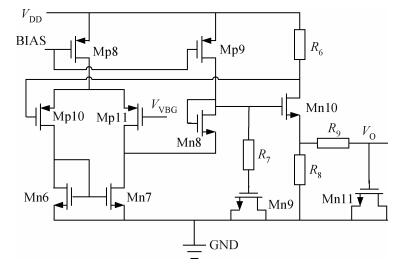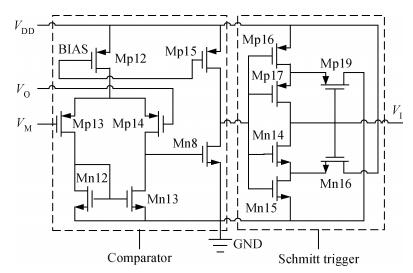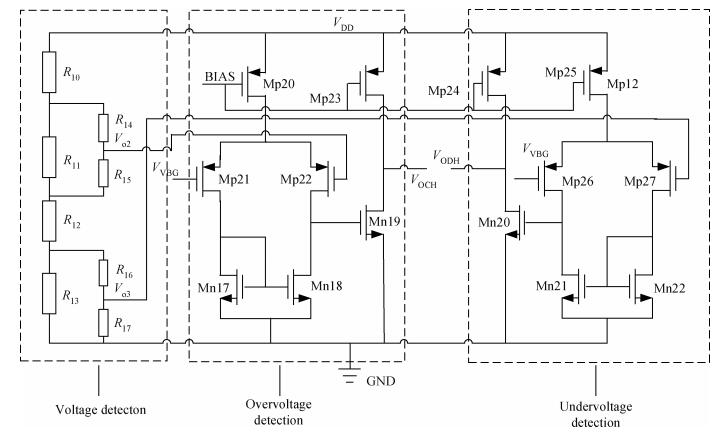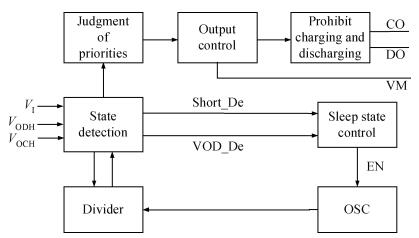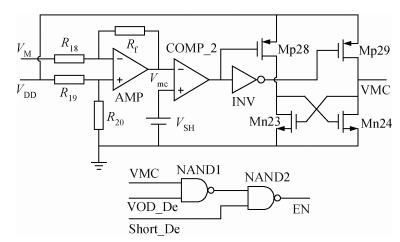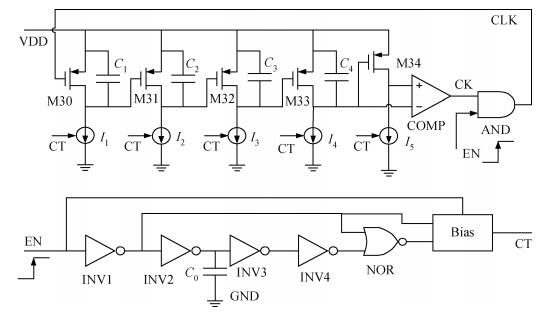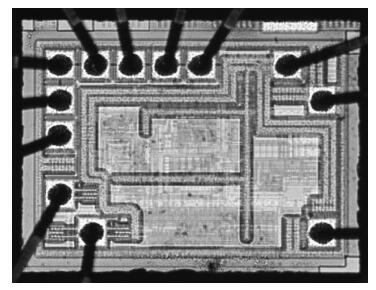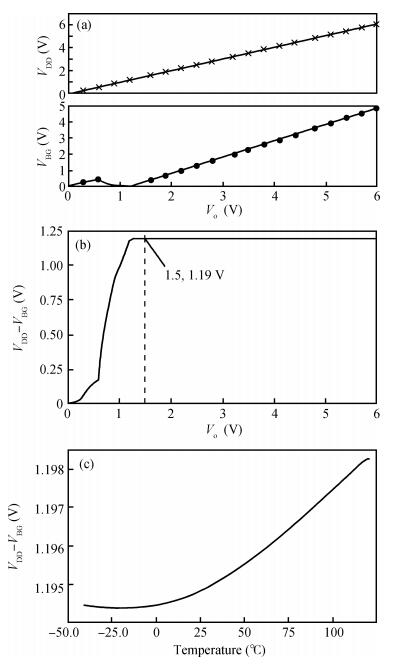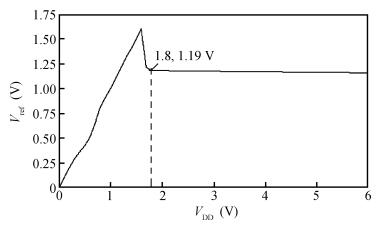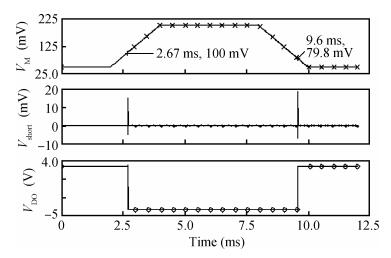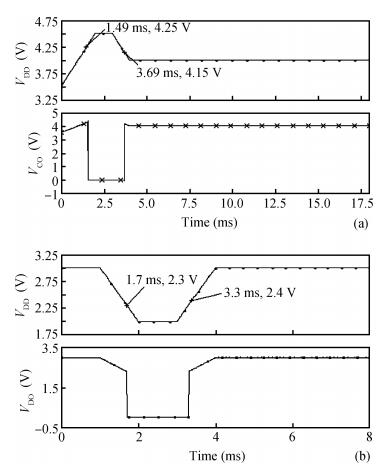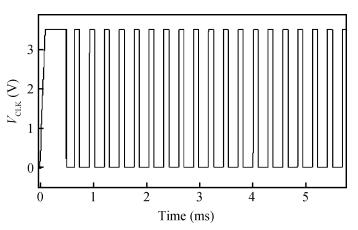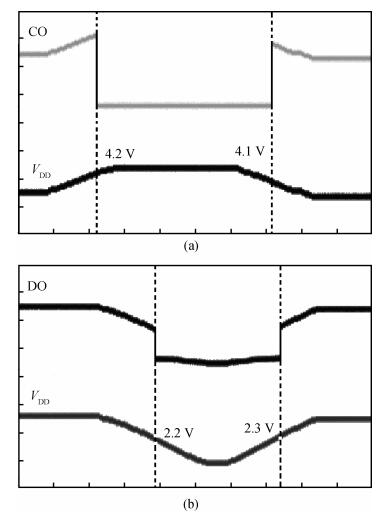| Citation: |
Jinguang Jiang, Sen Li. A single lithium-ion battery protection circuit with high reliability and low power consumption[J]. Journal of Semiconductors, 2014, 35(11): 115010. doi: 10.1088/1674-4926/35/11/115010
****
J G Jiang, S Li. A single lithium-ion battery protection circuit with high reliability and low power consumption[J]. J. Semicond., 2014, 35(11): 115010. doi: 10.1088/1674-4926/35/11/115010.
|
A single lithium-ion battery protection circuit with high reliability and low power consumption
DOI: 10.1088/1674-4926/35/11/115010
More Information
-
Abstract
A single lithium-ion battery protection circuit with high reliability and low power consumption is proposed. The protection circuit has high reliability because the voltage and current of the battery are controlled in a safe range. The protection circuit can immediately activate a protective function when the voltage and current of the battery are beyond the safe range. In order to reduce the circuit's power consumption, a sleep state control circuit is developed. Additionally, the output frequency of the ring oscillation can be adjusted continuously and precisely by the charging capacitors and the constant-current source. The proposed protection circuit is fabricated in a 0.5 μm mixed-signal CMOS process. The measured reference voltage is 1.19 V, the overvoltage is 4.2 V and the undervoltage is 2.2 V. The total power is about 9 μW.-
Keywords:
- lithium-ion battery,
- OV,
- UV,
- reference voltage,
- overcurrent (OC),
- short circuit (SC)
-
References
[1] Zhang H, Sun Y, Ding S, et al. Full-digital lithium battery protection and charging circuit based on DSP. 27th Chinese Control Conference, 2008:265[2] Hsieh Y C, Wu J L, Kuo Q Y. A Li-ion battery string protection system. International Conference on Applied Electronics, 2011:1 http://ieeexplore.ieee.org/document/6049095/authors[3] Chan C C. The state of the art of electric, hybrid, and fuel cell vehicles. Proc IEEE, 2007, 95:704 doi: 10.1109/JPROC.2007.892489[4] Lee Y S, Wang W Y, Kuo T Y. Soft computing for battery state-of-charge (BSOC) estimation in battery string circuit. IEEE Trans Industrial Electron, 2008, 55:229 doi: 10.1109/TIE.2007.896496[5] Moore S W, Schneider P J. A review of cell equalization methods for lithium ion and lithium polymer battery circuits. Adv Hybrid Vehicle Powertrains, 2001:68 http://papers.sae.org/2001-01-0959/[6] Lukic S M, Bansal R C, Rodriguez F, et al. Energy storage circuits for automotive applications. IEEE Trans Ind Electron, 2008, 55:2258 doi: 10.1109/TIE.2008.918390[7] Kuhn B T, Pitel G E, Krein P T. Electrical properties and equalization of lithium-ion cells in automotive applications. IEEE Vehicle power and Propulsion Conference, 2005:55[8] Kim C H, Kim M Y, Kim Y D, et al. A modularized charge equalizer using battery monitoring IC for series connected Li-ion battery strings in an electric vehicle. Power Electronics and ECCE Asia, 2011:304 http://ieeexplore.ieee.org/abstract/document/5944609/[9] Ye Zhihao, Wu Xiaobo, Sun Yueming, et al. A universal protection controller for Li-ion battery charger. Power and Energy Engineering Conference, 2010:1 http://ieeexplore.ieee.org/document/5448749/authors[10] Affanni A, Bellini A, Franceschini G, et al. Battery choice and management for new-generation electric vehicles. IEEE Trans Industrial Electron, 2005, 52:1343 http://porto.polito.it/1503806/[11] Sawada M, Arai H, Takahashi H, et al. Second-generation one chip Li-ion battery protection IC with an asymmetric bidirectional trench lateral power MOSFET. 22nd International Symposium on Power Semiconductor Devices & IC's, 2010:281 http://ieeexplore.ieee.org/document/5543976/?arnumber=5543976&punumber%3D5528430[12] Puviwatnangkurn W, Tanboonjit B, Fuengwarodsakul N H. Overcurrent protection scheme of BMS for Li-ion battery used in electric bicycles. 10th International Conference on Electrical Engineering, Computer, Telecommunications and Information Technology, 2013:1[13] Matsunaga S, Sawada M, Sugimoto M, et al. Low parasitic current 'half on' operation of battery protection IC. 19th International Symposium on Power Semiconductor Devices and IC's, 2007:49[14] Chen Min, Liu Jianchao. The design of a Li-ion battery protection IC for S ingle cell pack. Microprocessors, 2008, (1):22[15] Zou Xuecheng, Li Yuchao, Jiang Juan, et al. Improvement of the protection circuit for single cell pack Li-ion battery. J Huazhong University of Sci & Tech, 2007, 35:54 -
Proportional views






 DownLoad:
DownLoad:

